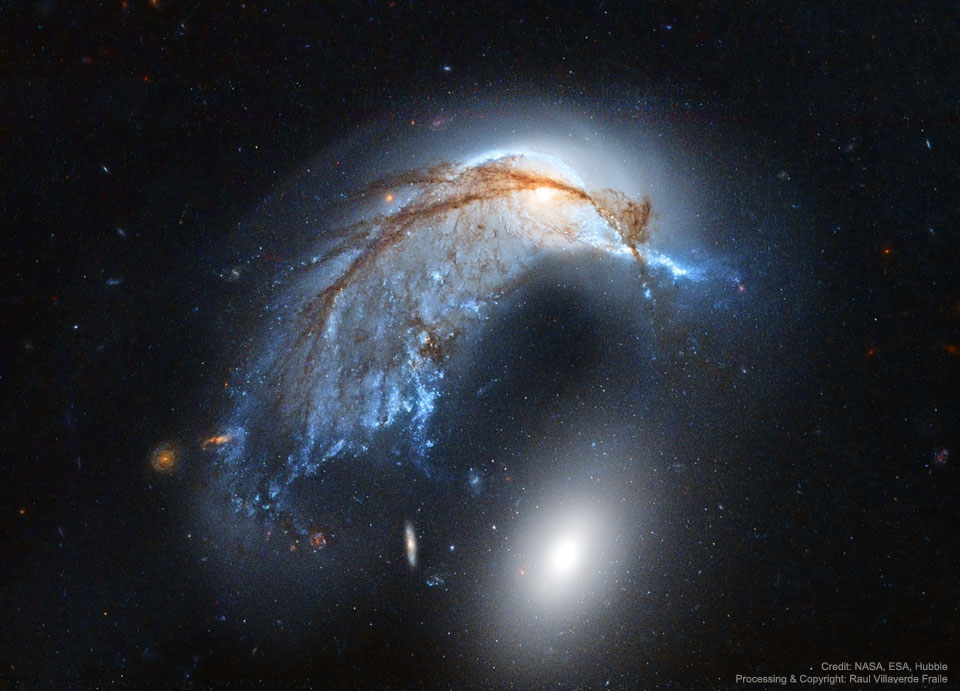2020 May 10
The Porpoise Galaxy from Hubble
Image Credit: NASA, ESA, Hubble, HLA; Reprocessing & Copyright: Raul Villaverde
Explanation: What’s happening to this spiral galaxy? Just a few hundred million years ago, NGC 2936, the upper of the two large galaxies shown, was likely a normal spiral galaxy — spinning, creating stars — and minding its own business. But then it got too close to the massive elliptical galaxy NGC 2937 below and took a dive. Dubbed the Porpoise Galaxy for its iconic shape, NGC 2936 is not only being deflected but also being distorted by the close gravitational interaction. A burst of young blue stars forms the nose of the porpoise toward the right of the upper galaxy, while the center of the spiral appears as an eye. Alternatively, the galaxy pair, together known as Arp 142, look to some like a penguin protecting an egg. Either way, intricate dark dust lanes and bright blue star streams trail the troubled galaxy to the lower right. The featured re-processed image showing Arp 142 in unprecedented detail was taken by the Hubble Space Telescope last year. Arp 142 lies about 300 million light years away toward the constellation, coincidently, of the Water Snake (Hydra). In a billion years or so the two galaxies will likely merge into one larger galaxy.
Tomorrow’s picture: behind betelgeuse
哈勃的海豚星系影像
影像提供: NASA, ESA, Hubble, HLA; 影像再处理与版权: Raul Villaverde
说明: 这个螺旋星系究竟怎么了?数亿年前,图中上方的大星系 NGC 2936,可能原本是个正常的螺旋星,旋转着,孕育着恒星,过着自己的日子。然后,它太靠近下方的大质量椭圆星系NGC 2937,于是向这个大质量星系俯冲而去。接下来的近距离重力交互作用,不仅使NGC 2936发生翻转,外貌也发生变形,其外观让NGC 2936博得海豚星系的令名。影像中,上右方星系狂暴的恒星诞生活动,形成了海豚的鼻子,而螺旋星系的中心则是海豚的眼睛。此外,这对星系另有Arp 142的编录号,而且看起来像是在护蛋的企鹅。不论是其称谓为何,复杂细致的黝黑带和明亮的蓝色恒星流,坠在这个身遇险境星系的左下方。这张近期重处理过、史上最高解析度的Arp 142影像,是由哈勃太空望远镜在去年所拍摄的。Arp 142恰好位在长蛇座方向,约3亿光年远的位置。再过10亿年之后,这两个星系可能会合并成一个规模较大的星系。
明日的图片: behind betelgeuse








beautiful!
美丽的蓝色,想一条丝巾,丝滑,柔顺